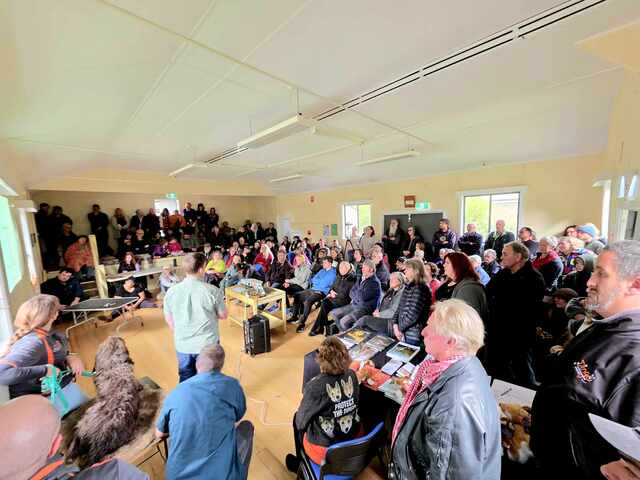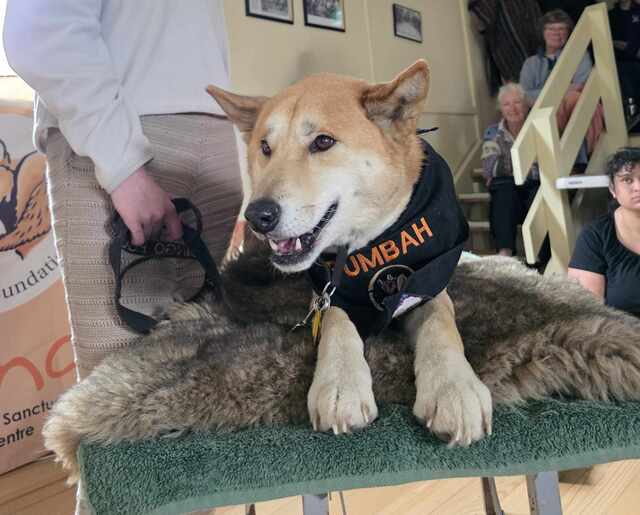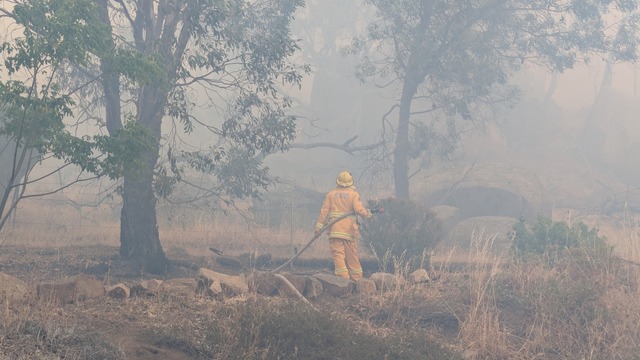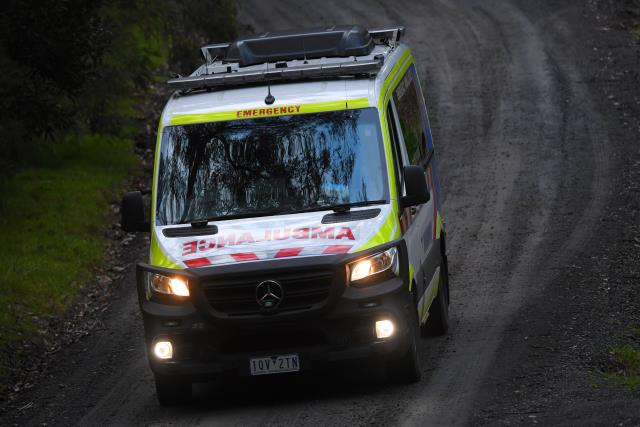A packed out Yellingbo Hall played venue to a Dingo Education Day on 13 July which saw over 140 people attend to learn more about one of Australia’s apex predators.
Hosted by the Australia Dingo Foundation (ADF) and Victoria National Parks Association (VNPA), the event explored the important role they play in managing our ecosystems and also gave attendees the chance to meet a couple of dingoes up close.
ADF founder Lyn Watson was taken aback by the number of people who showed up.
“We expected maybe 30 or 40, but even when we got there 20 minutes early, the chairs were all taken.
“There were people outside the door who couldn’t get in… they had people sitting three rows on the floor on the stage, they had people sitting on the floor in the main hall.
“It was absolutely jam packed as you could ever get in that place,” Ms Watson said.
She said the large interest shown by the public indicated that people want to learn more about the dingo.
Pumbah the dingo stole many hearts at the event while presenters discussed the fascinating scientific debate surrounding the origin of the dingo.
“Australia’s dingo is unique. We now know this from the DNA studies and the comparisons that are done with all of the other wild canines of the world,” Ms Watson said.
“The studies clearly show that our Australian dingo did not descend from the gray wolf. The studies clearly show that the dingo certainly did not descend from the street dogs of Asia.”
Victorian National Parks Association (VNPA) parks and nature campaigner Jordan Crook said a topic of focus on the day was a 2023 study by the University of New South Wales (UNSW) which showed most dingoes didn’t interbreed with wild domestic dogs brought over from Europe.
“The science is out and it’s very clear in relation to dingoes not hybridising with domestic dogs. That’s really clear now and we need to learn to live with them where possible because they’re just so important to the local ecosystems,” Mr Crook said.
But recent attacks by feral domestic dogs and dingoes on livestock in the Yarra Ranges have landowners weary.
While it isn’t clear what proportion of these attacks are committed by feral domestic dogs or dingoes, the UNSW study prompted conservationists to take a more nuanced approach to managing these attacks.
“There needs to be an unbiased assessment to understand if these are domestic feral dogs or if it’s dingoes,” Mr Crook said.
This sentiment wasn’t shared by landowners and farmers who attended the Yarra Valley Wild Dog Action Group’s meeting in April as it was out of touch with the significant impacts these attacks had on their livelihoods.
Stock and Land journalist Barry Murphy said at the meeting in order to combat the “view among city people” that the “wild dog is the dingo that shall be protected”, landowners needed to document the attacks.
“So for us it’s all about demonstrating just how bad it is.”
Dingoes are apex predators in Australia and are crucial at keeping wallaby, kangaroo and wombat populations in balance.
Alongside the dingo’s significant cultural importance to Victoria’s First Peoples, dingoes are protected threatened wildlife under the Wildlife Act 1975 and listed as ‘Vulnerable’ on the Flora and Fauna Guarantee Act 1988 Threatened List.
Research by DEECA’s Arthur Rylah Institute (ARI) revealed critically low dingo populations in north west Victoria (between 40 and 230) while populations in east Victoria remained stable (2640 to 8800).








